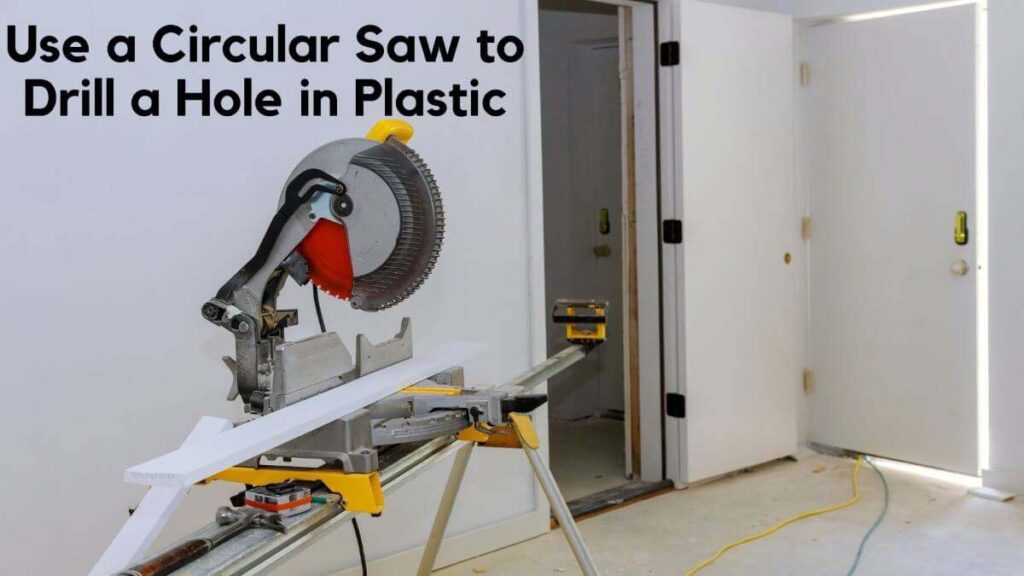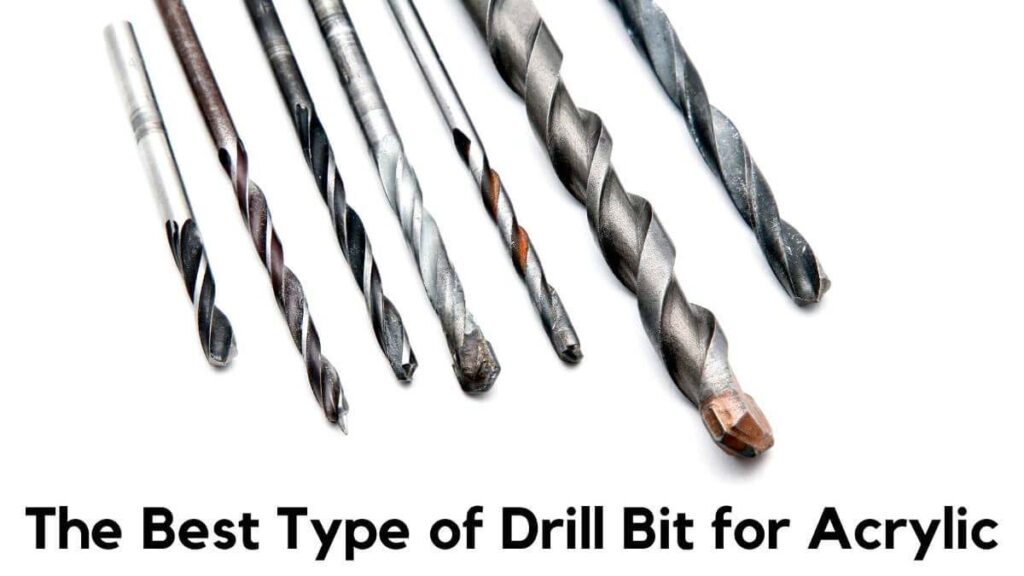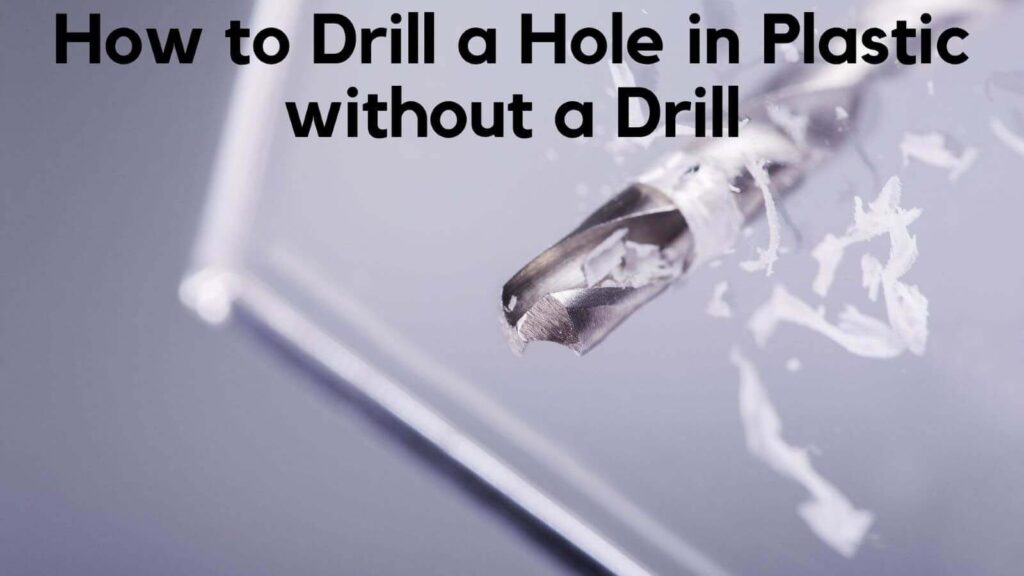Plastics have become an essential part of everyday living in the modern world. Plastics leave their mark on everything they touch, from kitchen cabinets to credit cards, because of their wide range of applications.
As a DIYer, you’ll likely need to know how to drill through plastic if you plan to use it in your project. There is, however, the question of whether or not you can use a wood drill bit on plastic.
Using a drill to make a hole in plastic is simple, but it requires some skill and a power drill isn’t always available. Obviously, the topic of how to drill a hole without a drill comes up.
Is it possible to use other equipment to drill in plastic? YES, and there are various ways!!
Drilling holes with a power drill and the right drill bits is a cinch. This article has five techniques to drill a hole in plastic without using an exercise. These solutions are simple to implement and involve only a few popular tools.
In this post, we’ll answer all of your questions and give you a few tips on drilling into plastic without cracking it. Once you’ve mastered the art of drilling through plastic, you’ll be able to tackle any DIY or home improvement project you’ve been putting off.
To top it all off, these techniques are quick and straightforward to employ, allowing you to create a hole in plastic with no risk. Finally, we’ve provided some helpful recommendations for drilling a hole in plastic without damaging the material.
Table of Contents
5 Ways to Drill a Hole Through the Plastic
A piece of string can drill a hole in the plastic. This procedure needs additional elbow work and is a lengthy process.
Requiring Tools
- Knife
- Pliers
- C-clamps
- A Piece of thick string
- Sewing needle
Utilize the Clamps to Secure the Plastic Container: Utilize the clamps to secure the plastic container while allowing it to move.
Warm the Needle: Insert the sewing needle into the pliers’ teeth. Following that, ignite the needle tip to allow it to gain heat.
Punch Multiple Holes in the Plastic: Then, punch multiple holes in the plastic container using the hot needle. While hitting the spot, ensure that you remain on the same line as the one you wish to cut.
Thread the Hole: Thread a twelve-inch-long thread through the first hole from any side. Wrap the line numerous times around your hand at this point to secure the location of the thread.
Pull the string Forward & Backward: Now, pull the string back and forth in the hole until it cuts from one spot to the next. Continue stinging until a cut line appears between all of the holes.
Read More: How to Drill a Hole in Wood Without a Drill
How to Use a Jigsaw to Drill a Hole in Plastic

C-clamps are necessary for this procedure since they secure and tighten the plastic in place. Additionally, if you’re interested in learning how to drill holes in plastic pots without using a drill, this method is for you.
Read More: How to Drill into Brick Without a Hammer Drill
Other Requiring Tools
- A Marker
- Jigsaw
- Safety goggles
- C-clamps
Securing the plastic and drawing the line: Secure the plastic in the C-clamp. Then, using a marker, indicate the container’s cut line.
Make Use of a Jigsaw:
- Use a jigsaw with a new and sharp blade to simply and cleanly cut through the plastic.
- Turn the jigsaw on by pressing the trigger located at the bottom.
- Gradually slide the jigsaw across the container’s top as required.
While going across the plastic, firmly press down on the jigsaw to enable it to cut effortlessly. After completing the line, the appropriate hole in the plastic will be created without using a standard drill.
Read More: How to Drill a Hole Bigger than Your Drill Bit?
How to Use a Hacksaw to Drill a Hole in Plastic
An essential instrument for cutting holes in plastic is the hacksaw. It’s a beautiful tool for creating holes in plastic because of its lightweight and sharp teeth. You may also learn how to make holes in plastic containers without a drill by following the method:
2 Requiring Tools
- C-clamps
- Hacksaw
Securing the plastic: Firmly clamp the plastic into the C-clamps to prevent it from moving. Additionally, ensure that the plastic is securely fastened to avoid movement and breakage during the hole-cutting process.
Mark the Cutting Lines: To produce a circular hole in the plastic and cut it accordingly, draw a cut line on the plastic using the marker.
Applying the Hacksaw: Begin cutting the hole in the plastic from the first line of the material. However, it may appear to be more difficult the first time, but it will become less complicated for you after you get into a rhythm.
Read More: How to Drill a Hole in a Mirror
How to Use a Circular Saw to Drill a Hole in Plastic

This circular saw approach works well for cutting holes in a thicker or more rigid plastic. This procedure will also help you cut a circular hole in the plastic. This technology is interesting since it allows you to change the blade and cut different materials.
Requiring Tools
- C-clamps
- Circular saw
- Gloves
- Dust mask
- Marker
- Safety goggles
Insert a blade: into the circular saw capable of cutting through the plastic quickly and effortlessly.
Secure the Plastic In the C-clamps: Secure the plastic in the C-clamps and then set both on top of the table. Assemble it securely.
Mark the Cut: After fastening the plastic, make a hole in the region where you wish to cut.
Apply the Circular Saw: Before turning on the saw, put on your protective clothing, as the jaw may leave jagged edges on the plastic. Additionally, operating a circular saw at high speed generates considerable heat, so working in a well-ventilated environment is best.
Now, start the saw and work your way toward the plastic. As you move the saw, ensure that you follow the exact line to create a flawless hole.
Nail or Pin Process
This method is ideal if you need to drill a small hole about 12 inches in diameter.
Required the Tools
- Lighter
- Nail or Pin
- Bench
Read More: How to Drill Straight Without a Drill Press
How to Use a Power Drill to Drill through Plastic
After acquiring the best drill bits, it’s time to get to work. First, you must take precise measurements and mark the area where you will drill. Remember that your measurements and markings must be pretty exact, as the drilling procedure cannot be reversed, and you do not want to miss your mark.
Before drilling a hole in the plastic, it is recommended to anchor the plastic to a bench or firm surface with clamps. This assists in maintaining the plastic object’s stationary position during the drilling process. As a result, the likelihood of destroying the material during drilling is reduced. Additionally, a spare piece of plywood should be placed beneath the plastic object. The plywood acts as a barrier, reducing the likelihood of chipping the bottom surface.
In general, a slower drill speed setting should be chosen when drilling a large hole. This is because excessive speeds can cause the material to melt. Additionally, reduce the drill bit rate setting when the drill bit exits the plastic substance.
Additionally, it is regarded as best practice to add a lubricant when drilling deeper holes. Lubricant aids in debris clearance and heat dissipation. You should maintain a close eye on the region immediately surrounding the gap throughout the drilling procedure. If you notice plastic shavings clogging the spot, immediately stop drilling, allow the plastic to cool, clean out the hole, and then resume drilling.
Finally, consider that plastic materials expand and contract in response to temperature changes. As a result, you want to ensure that the hole you drill is somewhat larger than required. Thus, screws placed in those holes will move freely without putting undue strain on the plastic substance.
Read More: Can I Use a Wood Drill Bit on Plastic?
How to Drill a Plastic Hole Without a Drill
So, we discussed drilling a hole in plastic with a drill above, but how can you accomplish it without one? Is that even possible? Surprisingly, yes, although the technique is weird. Here are a few non-drill methods for drilling plastic.
- Hammer
- Soldering Iron
- Electric Knife
Undrilled plastic holes are said to require melting the plastic. Inhaling melted plastic poses substantial health concerns; hence we do not recommend it.
To make a hole in plastic without a drill, grip a thin piece of plastic and pound a screwdriver into it. You can be creative here, but you won’t construct a good-looking hole.
How to smooth a plastic hole’s edges
After punching a hole in the plastic, you may end up with a sharp edge that is dangerous to touch. Fortunately, you may follow a few steps to smooth down the edge and avoid finger harm.
Numerous tools, including fine-grit sandpaper, varnish, an electric buffer, and a metal file, can be used to smooth down the plastic edge. Therefore, choose one of them suitable for you and apply it on the sharp edge. After a period, the plastic will have a smooth hole in it.
Read More: Can Drill Bits Be Made of Plastic?
What is the Best Type of Drill Bit for Acrylic?

Because acrylic sheets are a necessary component of the modern household, you may find yourself drilling through acrylic at some point. This is not an easy task and necessitates using a specialized drill bit. Essentially, there are four factors to consider when selecting the best drill bit for acrylic, which we’ve outlined below.
- Steel with a high speed (HSS)
- Carbide
- Cobalt
- Carbide Solid
Metallic drill bits have a tendency to cut through the stiff body of metal but are not recommended for acrylic. While they may be capable of drilling a hole through the material, you will almost certainly end up harming the surface.
If you use the same type of drill bit on acrylic without any modifications, the plastic material will be damaged.
FAQ
Is it possible to drill into PVC?
Typically, PVC is a soft material that may be drilled with metal and wood drill bits. Additionally, a spade bit will create a more giant hole in PVC.
However, before beginning drilling, use a hammer and nail to create a small divot in the PVC. It will assist you in avoiding slipping while drilling a hole.
Is it possible to create holes in the plastic using a soldering iron?
You can use a soldering iron on plastic, but be sure to operate in a well-ventilated environment. After thoroughly ventilating the area, put on the soldering iron to preheat.
Then, using slight pressure, press the iron’s tip against the appropriate location to create a tiny hole in the plastic.
Can hard plastic be drilled?
A standard drill bit won’t help you drill through solid plastic. A twist bit is ideal for drilling holes in plastic since it is brittle and prone to shatter.
Final Word
You should now have a better understanding of How to Drill a Hole in Plastic without a Drill. As you’ve seen, it’s doable, but it can be a little tricky if you don’t know what you’re doing and don’t have the correct drill bits for plastic. Even though home repair jobs may be a lot of fun and are often more accessible than you think, you must be prepared.

Hey, I am Shihab Uddin, I’m a huge fan of DIY crafts. My workshop is where I spend most of my spare time, and I’m always working on some project. To that end, I’d like to share some of my knowledge and experience with you in power tools, woodworking, and other specialized materials fabrication.
I will guide you with genuine knowledge that can assist you with deciding whether a drill is appropriate according to your requirements or not. If you want to find the best drill and know which type of drill is most suited for your needs, then I can guide you with my expertise. My passion lies in helping others find the correct products they need at an affordable price.


